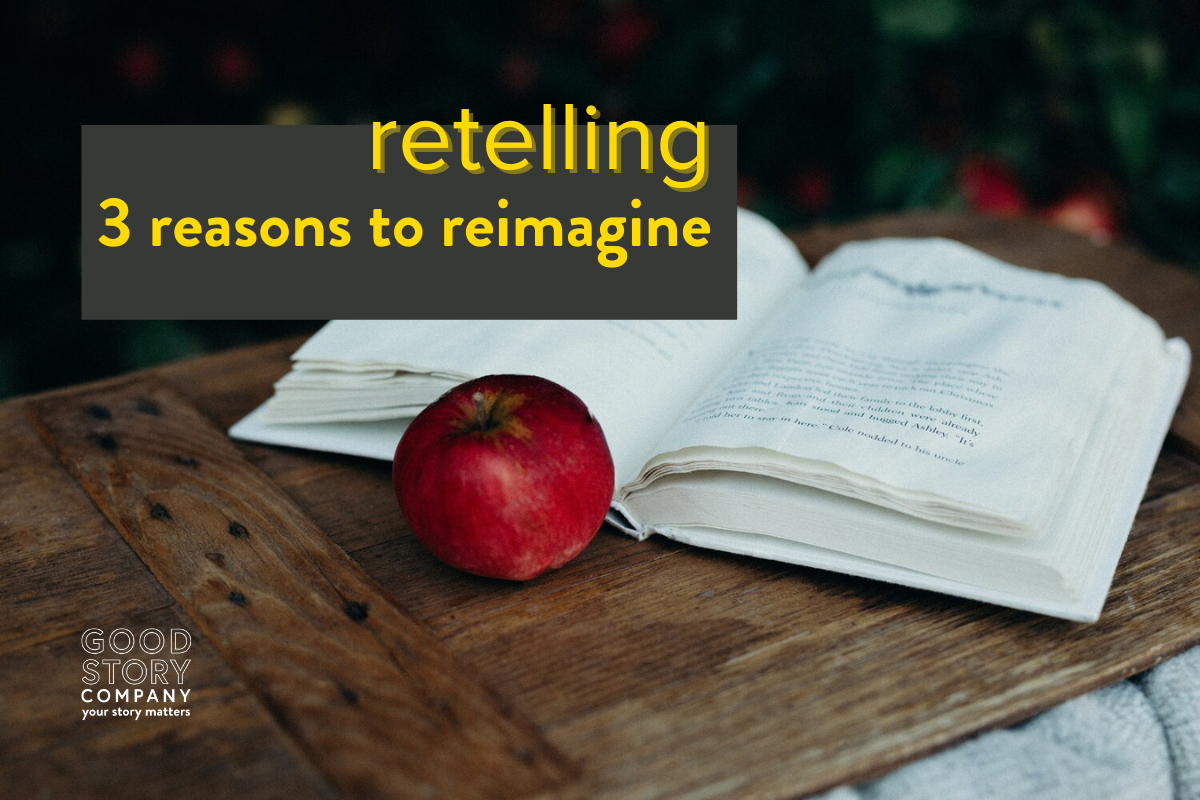Retelling (3 Reasons to Reimagine)
Is it just me, or does it seem like retellings and reimagined stories are everywhere you look? Whether I’m on the Kindle page or surfing Netflix, it seems like everyone’s telling familiar tales in different ways. Here’s more about this trend and why it matters.
Fairy tales are ripe for retelling.
Retelling Stories
They say there’s nothing new under the sun. So, it comes as no shock that some writers run with well-known, already established premises. The way is already paved!
One of my all-time favorite books is East by Edith Pattou. It’s a multiple-POV retelling of East of the Sun and West of the Moon.
In the original Norwegian fairytale, the four winds of the compass rose act as mentor/guide characters. Pattou creates flesh and blood characters to serve these functions in the story. At its heart, the premise of the story remains the same: an enchanted white bear, a resourceful girl, and a love that defies all odds.
Other authors such as Robin McKinley, Jane Yolen, and Donna Jo Napoli - to name a few more favorites - have been retelling fairy tales for years. Now, there seems to be a resurgence with titles like Spinning Silver by Naomi Novik and A Wolf for a Spell by Karah Sutton.
(By the way, an exclusive interview with Karah Sutton is available for members of Good Story Learning. In it, she talks about the process of writing and honoring a centuries-old folkloric character like Baba Yaga.)
Retelling isn’t only limited to fairy tales. Mythology, history, or any other common body of knowledge can be ripe for reimagining.
Why to Write a Retelling
1. Common Ground
A big plus to writing a retelling is having a built-in body of knowledge at your disposal. Existing understandings can act as a bridge between writer and reader. Before you’ve even started, you’ve set the tone for what kind of story this will be … even if you wind up deciding to throw convention to the four winds.
2. Compare and Contrast
After a familiar entry point, you can surprise and delight readers with your own twist to the story. What if the protagonist were queer? What if the American Revolution were recast with BIPOC representation? What if Pride and Prejudice had zombies?
Going against the grain and our expectations can change our perspective and make us think about the world differently. We know how the story is supposed to go. Imagine what you can do by shaking things up.
3. Culture Change
Stories are part of a culture’s heartbeat. If you want to know what’s important to a group of people, listen to the stories that they tell. As creators, we have a platform to spark dialogue that will move and shape our communities. When we catch people off-guard by telling a story that defies their expectations, we’re encouraging them to think about how things could be different.
I recently watched the award-winning film, Nomadland, inspired by Jessica Bruder’s book. I expected the filtered Instagram view of #vanlife sunsets on the beach. Instead, it opened my eyes to the harsh reality of an invisible population living in the margins.
It was not what I expected. It also shifted my perspective.
How to Write A Retelling
I love cover songs done well. What makes them great is that they’re never the same as the original. There’s always a fresh take, whether the artist is honoring the original as closely as possible or running with a wildly different sound.
Retelling in books is the same way. As a writer, you get a running start. Your take will bring something new to a story we think we already know. From there, you can begin challenging our assumptions.
So, what’s the change you wish to see in the world as we know it?
For a wealth of perspectives and opportunities to grow, join us at Good Story Learning!

